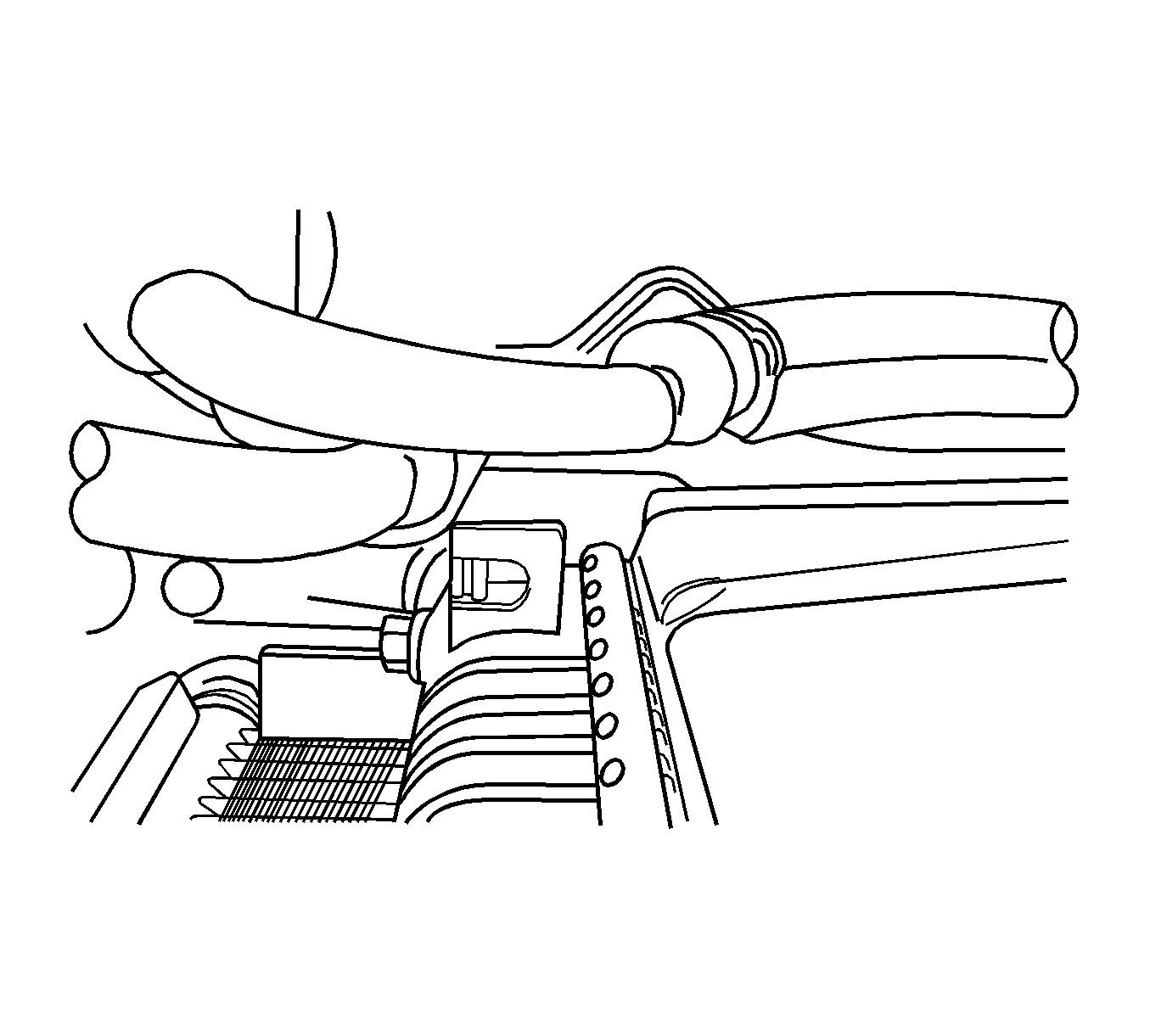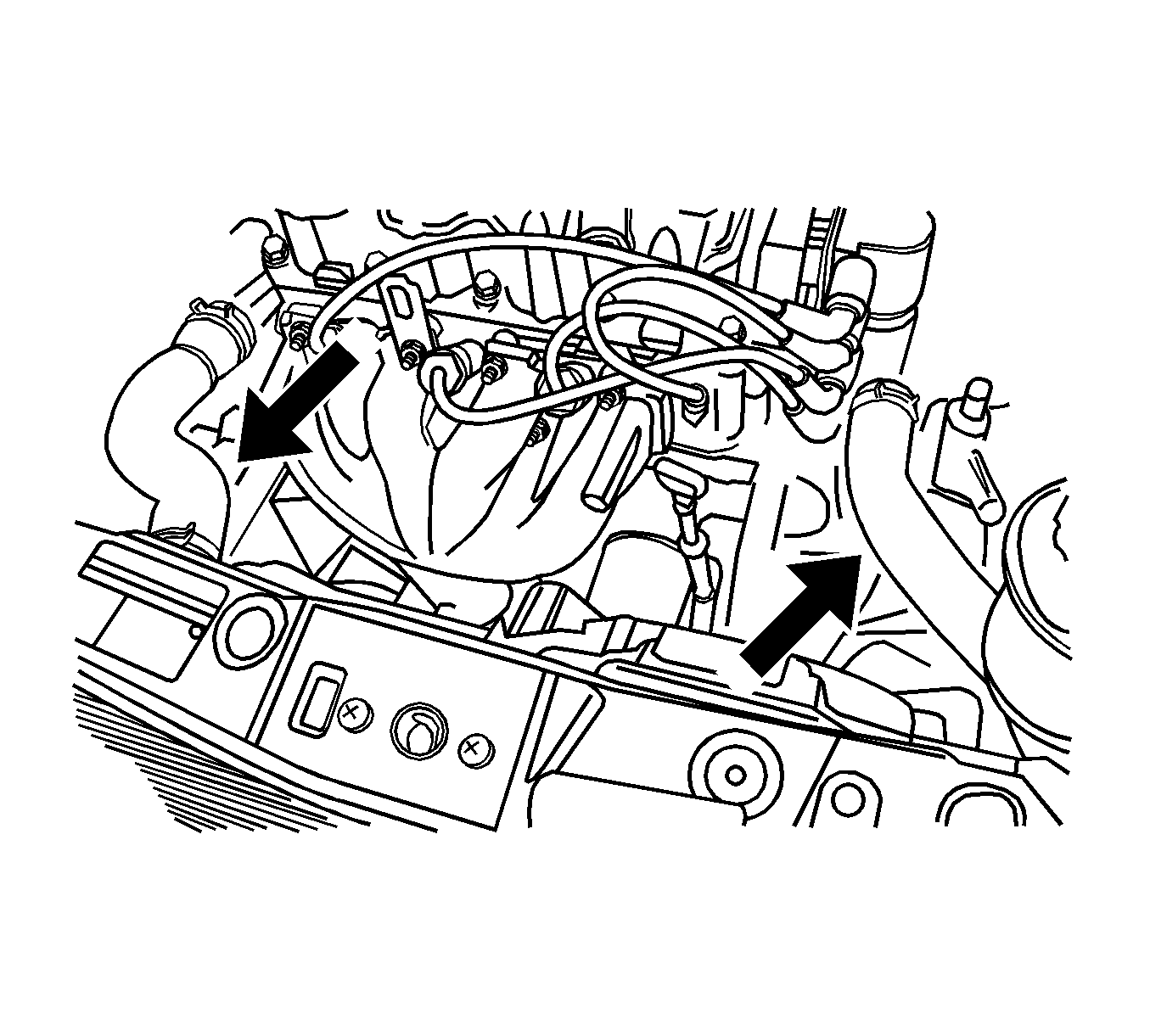For 1990-2009 cars only
- Place a pan below the vehicle to catch the draining coolant.
- Remove the surge tank cap.
- Unplug the drain cock.
- Catch the escaping fluid in a drain pan.
- Remove all sludge and dirt from inside the surge tank. Refer to Radiator Surge Tank Replacement.
- Plug the drain cock.
- Add clean water to the surge tank.
- Fill the tank slowly so that the upper reservoir hose remains above the water line. This allows the air inside the cooling system to escape.
- Start the engine.
- Run the engine until the thermostat opens. You can tell the thermostat is open when both radiator hoses are hot to the touch.
- Stop the engine.
- Repeat steps 1-9 until the drained water is clear and free of coolant and rust.
- Fill the cooling system through the surge tank with a mixture of ethylene glycol antifreeze and water. The mixture must be at least 50 percent antifreeze, but not more than 60 percent antifreeze for cold weather operation.
- Fill the surge tank to the specified MAX fill mark on the outside of the tank.
Caution: As long as there is pressure in the cooling system, the temperature can be considerably higher than the boiling temperature of the solution in the radiator without causing the solution to boil. Removal of the pressure cap while the engine is hot and pressure is high will cause the solution to boil instantaneously -- possibly with explosive force -- spewing the solution over the engine, fenders and the person removing the cap.



Important: To avoid damaging the vehicle, never use an antifreeze mixture more concentrated than 60 percent antifreeze to 40 percent water. The solution freezing point increases above this concentration.
